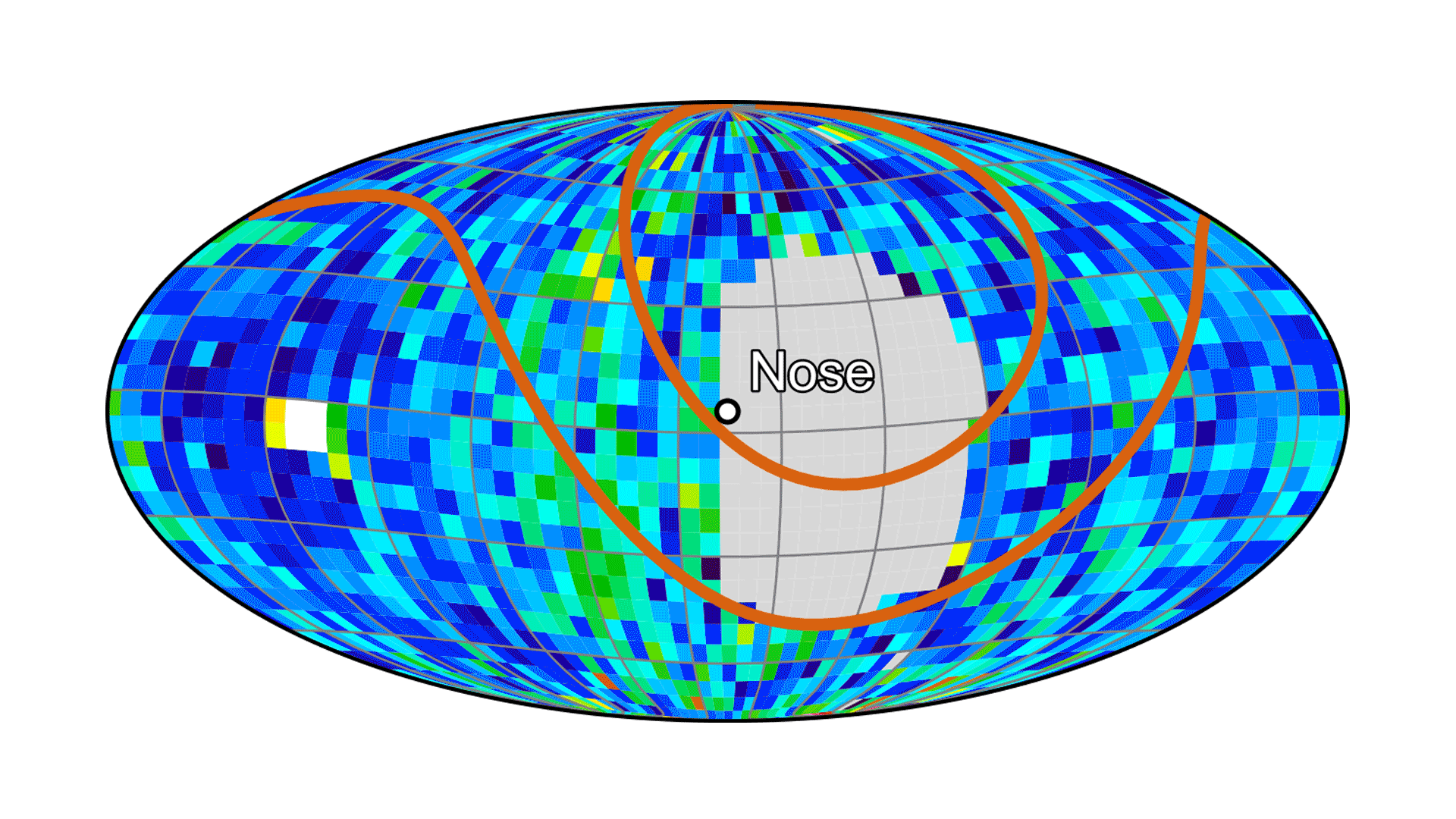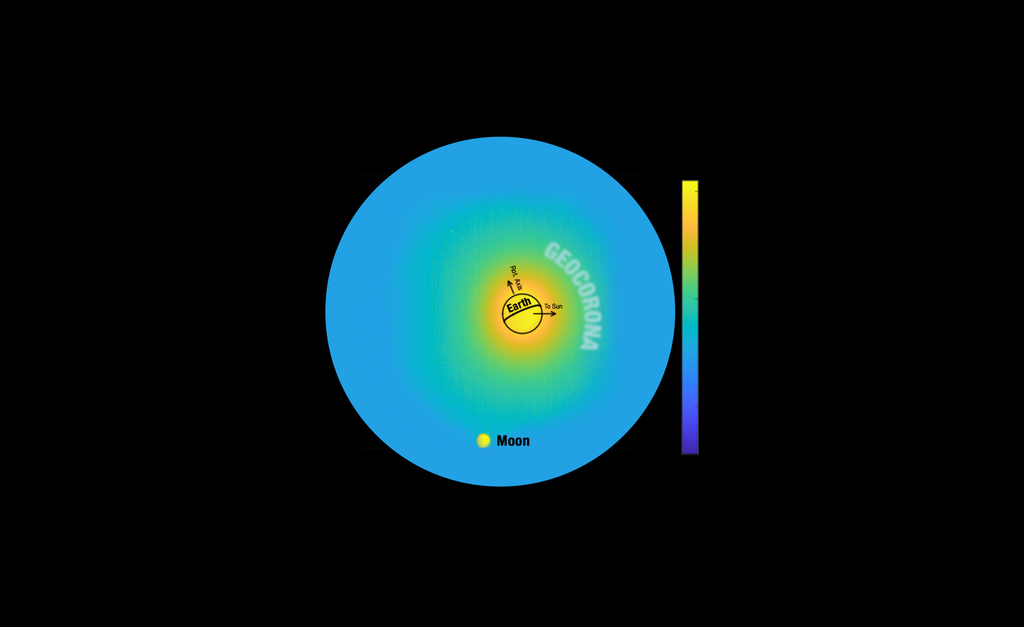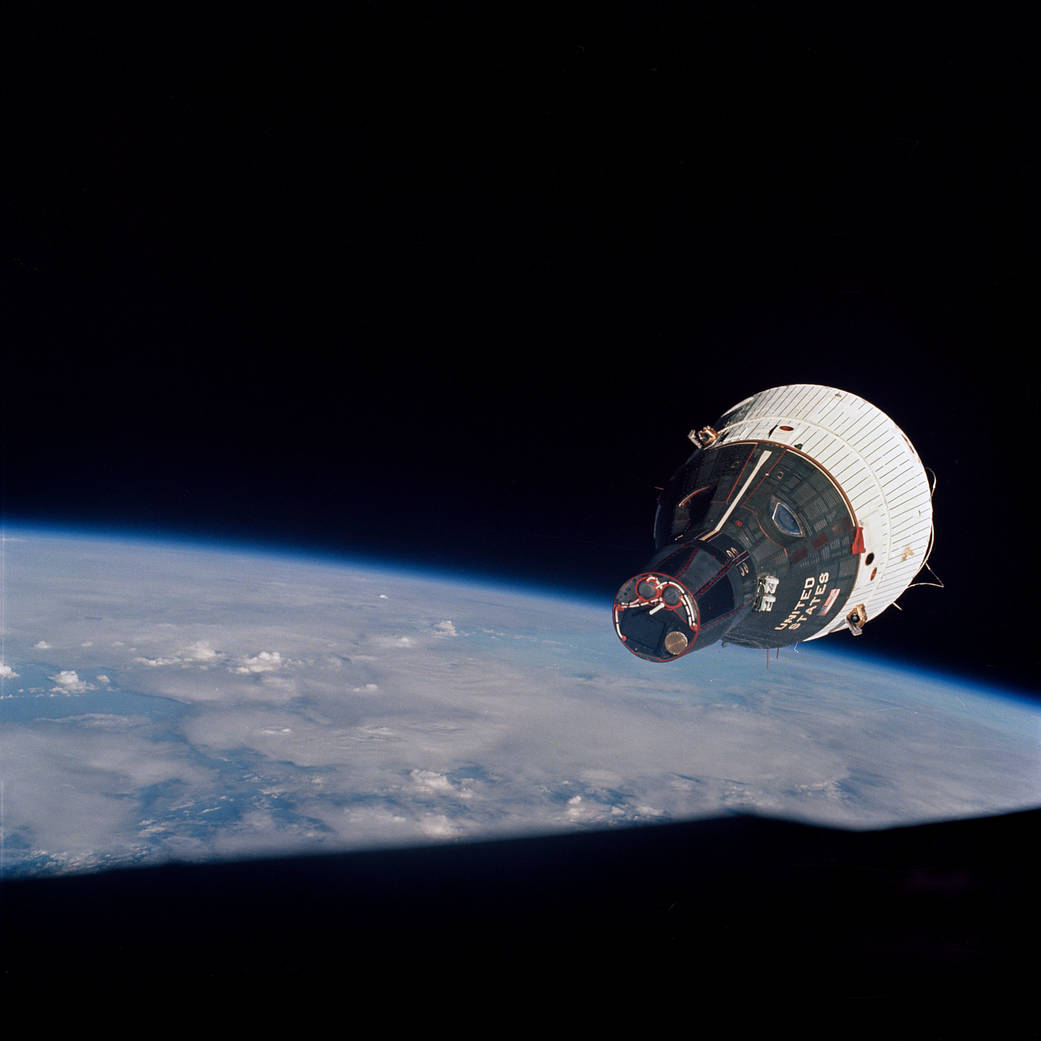In this photo from Dec. 15, 1965, the Gemini 7 spacecraft is seen from the during their rendezvous mission in space. The two spacecraft are approximately 43 feet apart.
Astronauts Jim Lovell and Frank Borman launched on Gemini-VII on Dec. 4, 1965, and eventually spent two weeks in orbit, the longest-duration flight at that time.
Just as Orion and the International Space Station are helping NASA learn how to go to Mars, the Gemini program defined and tested the skills NASA would need to go to the Moon in the 1960s and 1970s. Gemini had four main goals: to test an astronaut’s ability to fly long-duration missions (up to two weeks in space); to understand how spacecraft could rendezvous and dock in orbit around the Earth and the Moon; to perfect re-entry and landing methods; and to further understand the effects of longer space flights on astronauts.
Image Credit: NASA























